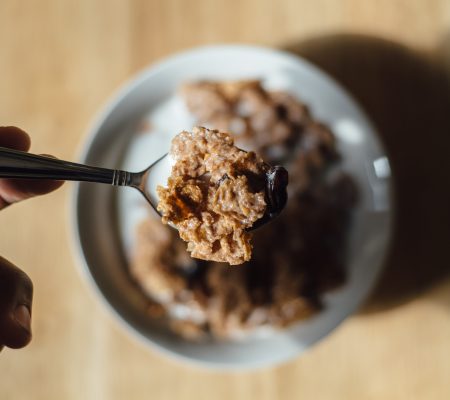You are what you eat, or so it goes. Two words: cinnamon rolls. We all have our weaknesses, right? The same goes for whole communities, and communities that prioritize local, sustainable food options and minimize food waste enjoy the perks of a supply chain that has less of an impact on air quality.
There are many ways you as an individual and you as a community member can choose food options that are not only healthier for you and your family, but are healthier for the environment you live in. Whether you’re an environmental novice or a seasoned veteran, live on a solar-paneled organic farm or in a high-rise flat with sealed windows, bask in the untamed wilderness like Grizzly Adams or shrink from sunlight like Gollum (but we hates it!), there are ways for you to help. Here are some ideas to get you started and to keep you going.
Good
- Avoid using drive-thru lanes to minimize time spent idling. Idling for longer than 10 seconds uses more gasoline and emits more harmful pollutants than turning your engine off and restarting.
- Purchase sustainably sourced foods. This one sounds easy, but how exactly does one determine what foods are sustainable? An easy way to start is to buy certain foods—especially produce—only when it’s in season.
Better
- Eat at restaurants within walking (or biking!) distance to cut down on car travel. It’s also good exercise—especially after that (second) appetizer.
- Purchase locally produced foods, which require minimal amounts of transportation, thus generating fewer emissions. Your local farmers market is a fantastic (and fun!) way to do this. For a full list of Indiana Farmers’ Markets, check here. Luckily, larger scale food stores and chains are catching on to customers’ demand for local, sustainable food, and are making it easier to identify and purchase sustainable food.
- Consider buying in bulk and freezing. If you have the freezer space and the mouths to feed, many local livestock farmers will sell to you directly. You can also start a food club with friends, coworkers, or family members to make buying in bulk more affordable. The livestock industry is a major contributor to greenhouse gas emissions, so more of us buying local and sustainable stands to make a substantial positive impact.
Best
- Bring lunch in reusable or biodegradable containers. If you have a habit of stopping for coffee on your way to work each morning, keep a reusable mug handy. If you’re going out to eat, take along your own reusable to-go container. Some places even offer discounts for using reusable containers. All told, food packaging and containers account for 23% of the waste stream in the U.S.
- Only purchase food you will actually consume. You’ll help prevent the unnecessary use of energy in food production and reduce waste. This is on the “best” list not because it’s difficult to do, but because food waste is a huge problem, and one that every single one of us has a hand in. It’s estimated that Americans toss out 1 in 4 bags of groceries we buy. That’s $1,500 a year straight into the garbage (or compost bin) for a family of four.
We all have to eat. Why not make a positive impact on air quality while we’re at it? After all, we also have to breathe.
For ways to help out our air quality in other areas of your life, visit the aptly titled “How You Can Help” section of Knozone.com.
